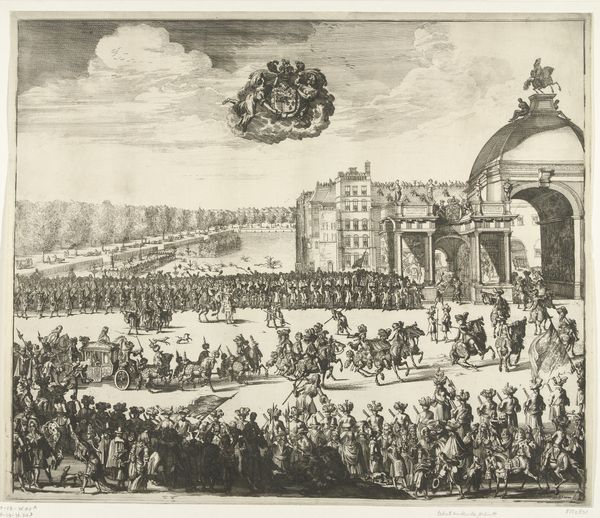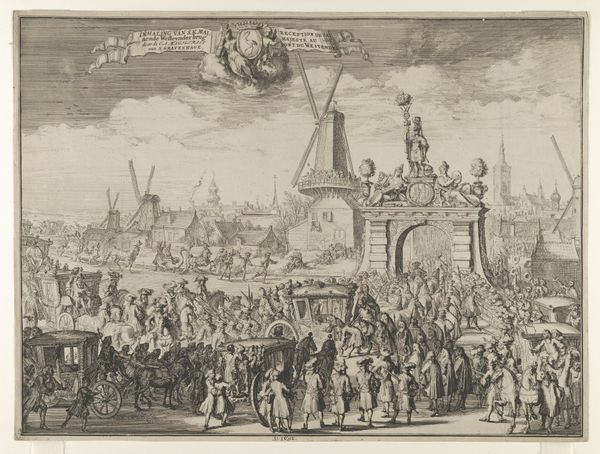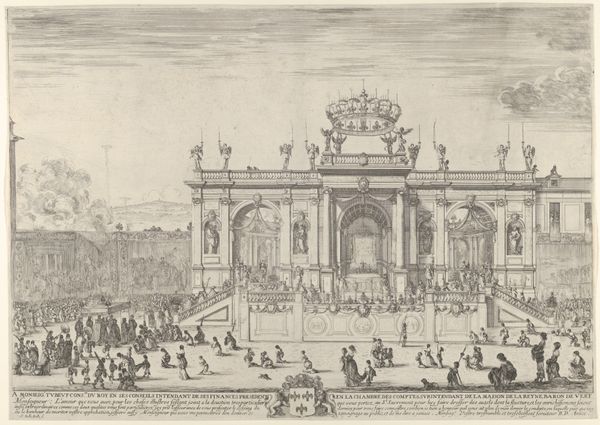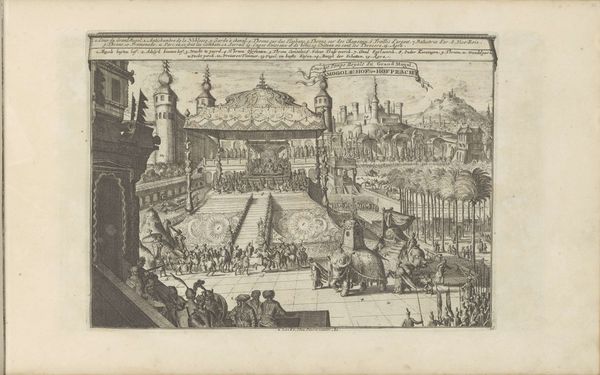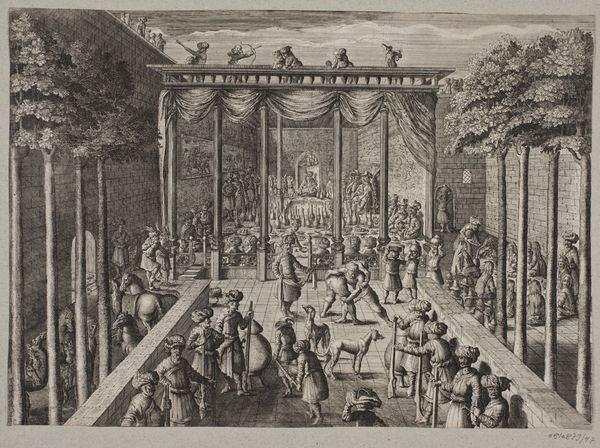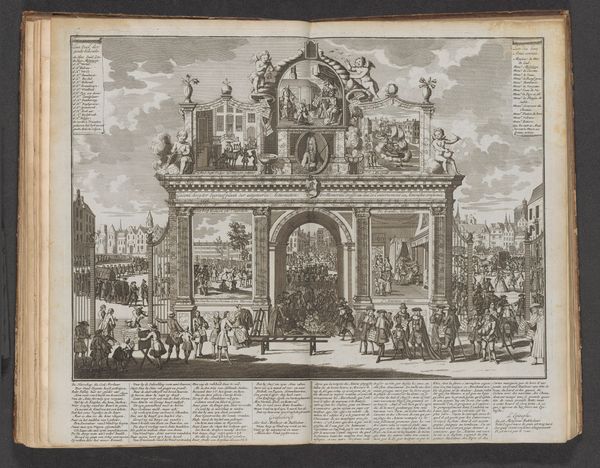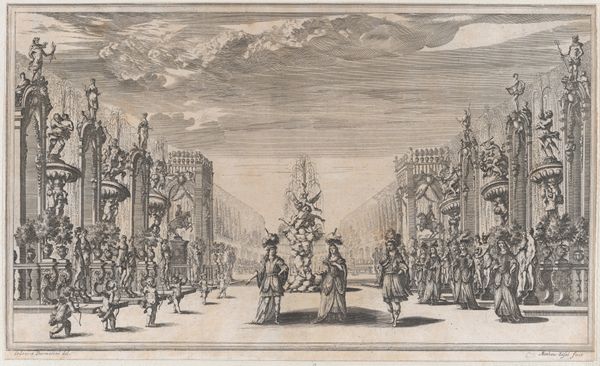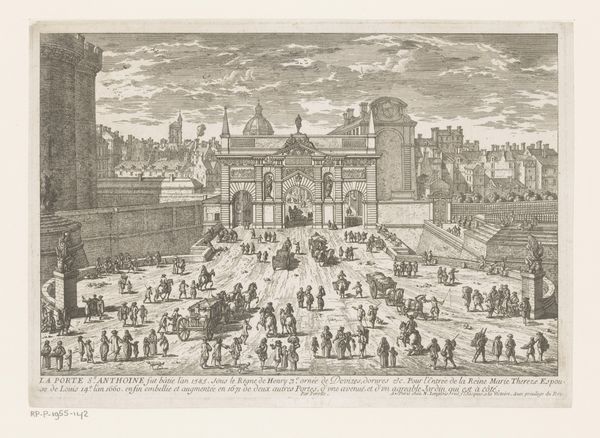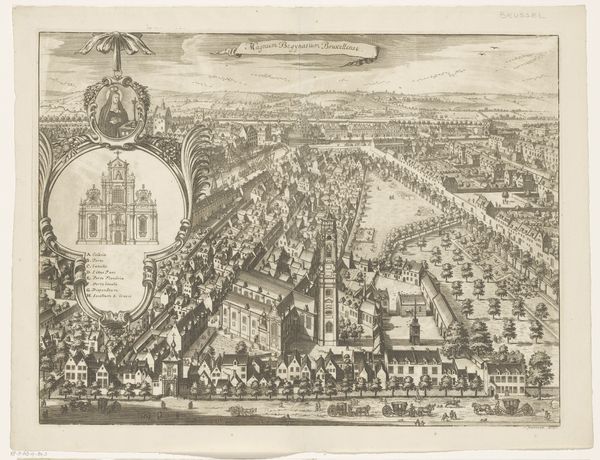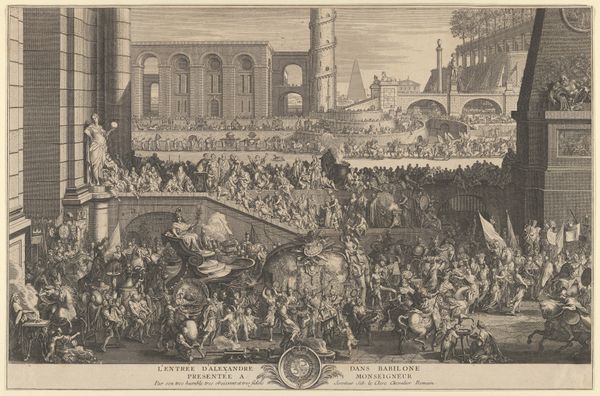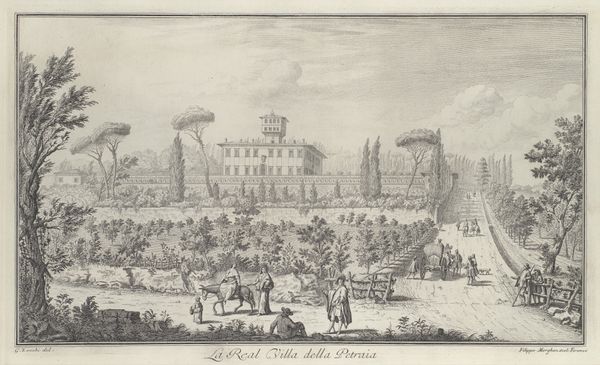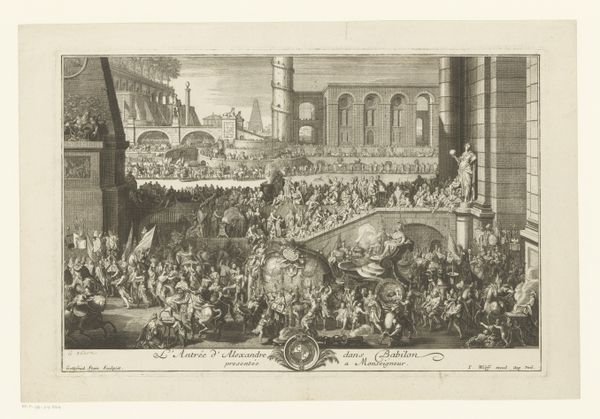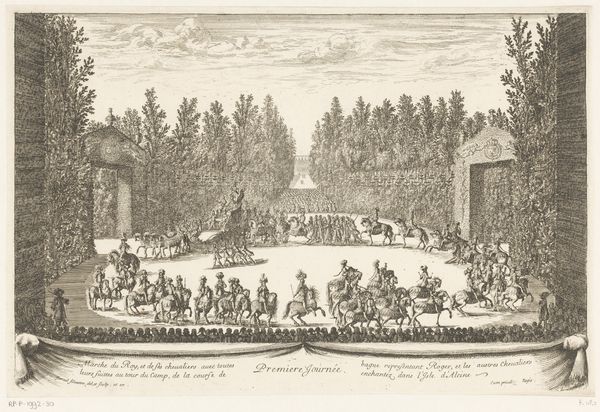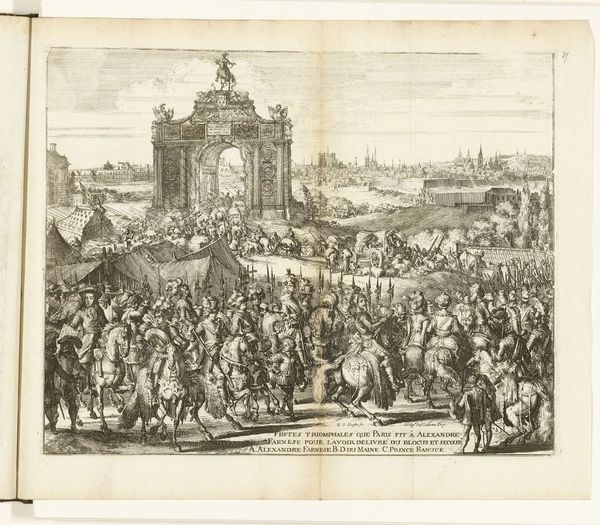
The Court of the Great Mogul ('t Hof vanden grooten Mogol) 1600 - 1700
0:00
0:00
drawing, print, engraving, architecture
#
drawing
# print
#
landscape
#
islamic-art
#
history-painting
#
engraving
#
architecture
Dimensions: sheet: 11 3/4 x 14 3/4 in. (29.8 x 37.4 cm)
Copyright: Public Domain
Editor: This drawing, or rather a print, called *The Court of the Great Mogul*, is an anonymous piece from between 1600 and 1700. It's held at the Metropolitan Museum of Art. The architectural elements are striking, almost theatrical in their arrangement. What do you see in this piece from a formalist perspective? Curator: Primarily, I'm drawn to the compositional balance achieved through the meticulous layering of space. The artist orchestrates a transition from the detailed foreground figures to the receding architecture, culminating in a somewhat hazy, distant landscape. The lines, meticulously etched, articulate a clear spatial recession, using size and placement to convey depth. Do you notice how the robust foreground figures, progressively diminished in scale as they move into the background, guide our gaze? Editor: Yes, and I also notice the contrast between the static architectural elements and the dynamic movement of the figures and animals. Is there anything to be gained from observing the balance here? Curator: Absolutely. This juxtaposition creates visual interest and underscores the structured yet lively atmosphere of the court. Consider, too, the use of light and shadow. Notice how light falls unevenly to provide stark visual contrasts. These illuminate specific figures and architectural details, thereby establishing a hierarchy of importance within the composition. The strategic deployment of highlights directs our attention. Editor: It seems like even in its time, there was an intentional deployment of perspective and line to give the piece an intentional effect. Thank you, this really made me look at the image in a completely different way. Curator: Indeed. Examining the artwork as an aesthetic structure, and not just as a historical document, provides rich insights into its intentionality and artful execution.
Comments
No comments
Be the first to comment and join the conversation on the ultimate creative platform.
